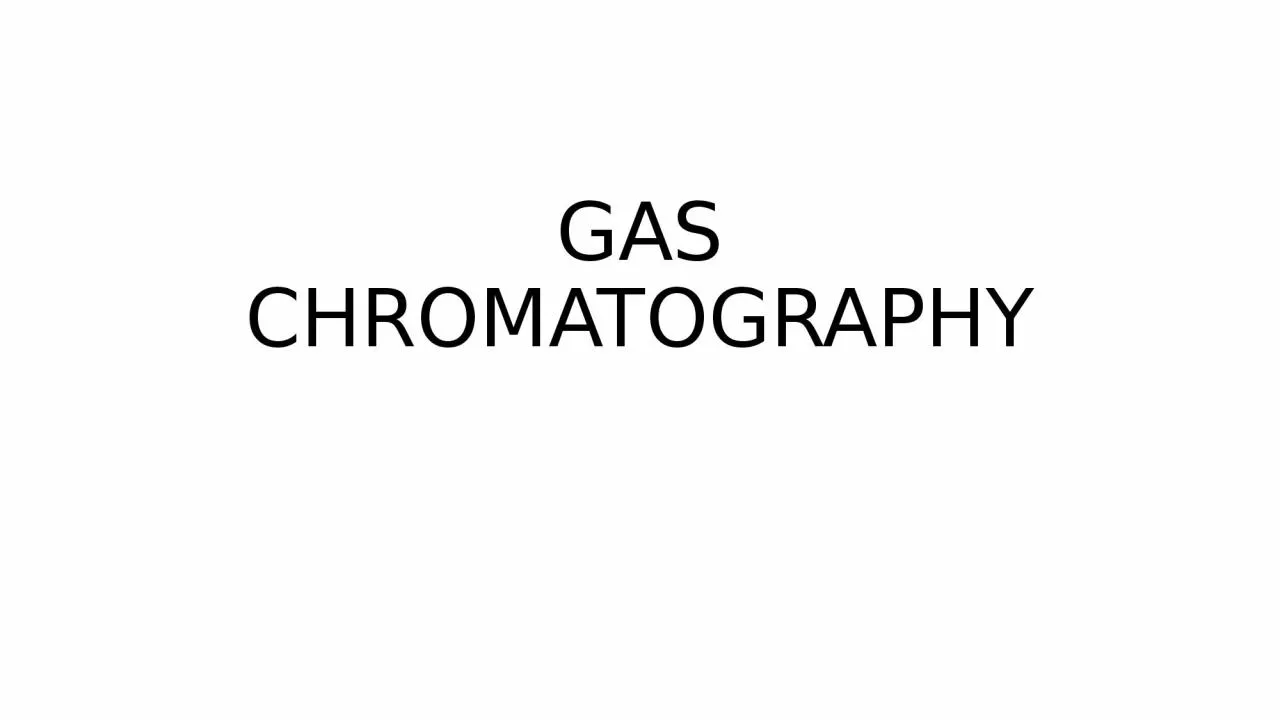

A sample containing the materials to be separated is injected into the gas chromatograph Gas Chromatography A mobile phase carrier gas moves through a column that contains a wall coated or granular solid coated stationary phase ID: 915389
Download Presentation The PPT/PDF document "GAS CHROMATOGRAPHY Is a technique used f..." is the property of its rightful owner. Permission is granted to download and print the materials on this web site for personal, non-commercial use only, and to display it on your personal computer provided you do not modify the materials and that you retain all copyright notices contained in the materials. By downloading content from our website, you accept the terms of this agreement.
Slide1
GAS CHROMATOGRAPHY
Slide2Is a technique used for separation of volatile substances, or substances that can be made volatile, from one another in a gaseous mixture at high temperatures.
A sample containing the materials to be separated is injected into the gas chromatograph.
Gas Chromatography
Slide3A mobile phase (carrier gas) moves through a column that contains a wall coated or granular solid coated stationary phase.
As the carrier gas flows through the column, the components of the sample come in contact with the stationary phase.
The different components of the sample have different affinities for the stationary phase, which results in differential migration of solutes, thus leading to separation.
Slide4Gas chromatography can be used for both qualitative and quantitative analysis.
Comparison of retention times can be used to identify materials in the sample by comparing retention times of peaks in a sample to retention times for standards. The same limitations for qualitative analysis There are two types of Gas chromatography
Gas - Solid Chromatography (GSC)
Gas - Liquid Chromatography (GLC)
Slide5Gas - Solid Chromatography (GSC)
The stationary phase, in this case, is a solid like silica or alumina.
It is the affinity of solutes towards adsorption onto the stationary phase which determines, in part, the retention time.
The mobile phase is, of course, a suitable carrier gas.
This gas chromatographic technique is most useful for the separation and analysis of gases like CH
4
, CO
2
, CO, ... etc.
Slide6Gas - Liquid Chromatography (GLC)
The stationary phase is a liquid with very low volatility while the mobile phase is a suitable carrier gas.
GLC is the most widely used technique for separation of volatile species.
The presence of a wide variety of stationary phases with contrasting selectivity and easy column preparation add to the assets of GLC or simply GC.
Slide7Gas Chromatography (GC)
Gas chromatography is a chromatographic technique that can be used to separate volatile organic
compounds.
It
consists of
a
flowing mobile phase
an injection port
a
separation column
(
the stationary phase
)
an oven
a detector.
Slide8Slide9The organic compounds are
separated due to differences in their partitioning behavior between the mobile gas phase and the
stationary phase in the column.
Principle
Slide10Mobile phases are generally inert gases such as helium, argon, or nitrogen.
The injection port
consists of a rubber septum through which a syringe needle is inserted to inject the sample.
The
injection port is maintained at a higher temperature than the boiling point of the least volatile
component in the sample mixture.